Up Close with Josh Amberger
Josh Amberger is getting ready for the 2022 season with high hopes and great confidence, and we had a chat with him about racing, gravel bike packing, bunya nuts and much more.
Slowtwitch: Welcome back to Slowtwitch.
Josh Amberger: Thanks mate, stoked.
ST: How are you doing and how is your prep for 2022 going?
Josh: The vibes are good Herbert, as it’s looking like we’re going to have a normal year of travel and racing. The preparation has been better than normal to be honest. The motivation has waxed and waned the last two years, but there’s a steady stream of it now and things feel good. The non-triathlon stuff is strong as well. We’ve had a cracking bunya nut season here Down Under, and La Nina has meant that it’s a great time to undertake some guerilla re-vegetation projects around the local area too.
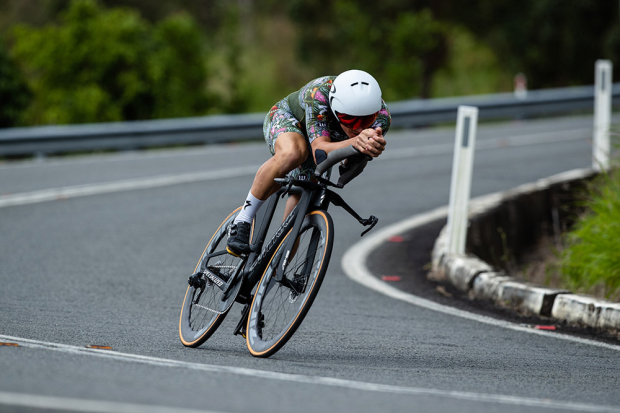
ST: How would you describe bunya nut? And I don’t mean whom would you describe as a bunya nut.
Josh: A bunya nut is an edible food that’s native to Australia – similar to a Pinhao in Brazil, I’m told. Once cooked it becomes a soft starchy wonderland. I can describe the sensation of eating bunya nuts as like dancing on a delicate rainbow after a cool Summer sun shower, and you find the pot of gold every time. It’s the whole experience that gets me; aggrandizing local knowledge of where the trees are located, the long wait for a very short season – sometimes it’s 2-3 years between seasons, the forage and the hard earned keep, dehusking the nuts, identifying key genetic traits and differences in the nuts between particular trees, to cooking and eating them. It’s good stuff.
ST: You closed out your 2021 triathlon season with a win at the Hervey Bay 100 Triathlon – a race that features a 2k swim, 80k bike and 18k run. And that seemed to have found you well both in terms of the result and the unique distance.
Josh: Yeah Hervey Bay was a good local ripper to do at the end of the season, as frankly there was nothing else accessible or motivating to me at the time. It was a small professional race by the best of standards, but the race definitely told me a lot about my strengths as an athlete. Second to me on the day was Nic Free, who’s from an ITU background and new to the distance. He’s part of that sub-30min 10km younger generation where freakish running ability and capable swimming seems inherent, and he ripped me a new one months earlier at Sunshine Coast 70.3 (winning the race on his 70.3 debut). But take the pack fill out, separate the athletes a bit so it’s more of a time trial, and he was never within cooee of the win at Hervey Bay. Winning at Hervey didn’t make me a better athlete or anything, but it helped me further understand the conditions that I perform well in, and consequently what I keep needing to work on for success in those big championship days.
ST: Ah, that Nic Free.
Josh: It will be exciting to see what Nic does with his career direction. He could go back to ITU and take a shot at the Games, or he could excel at middle distance. It seems there’s a strong production line of diverse young talent around the world at the moment. It’s an exciting time to be racing.
ST: Would you embrace more races with distances that do not stick specifically to a certain format?
Josh: I mean it’s alright, a unique format in terms of different distances is not something that makes me gush or anything, but if the prize money and sponsor interest is there for a unique distance then I would certainly do it. The upcoming PTO series comes to mind here, or more imminently, the inaugural Couples Championship event in Florida early March. The Couples Champs event is totally unique altogether, as it more of less builds on the ITU mixed relay success, but makes it longer and exclusive to professional couples (to which there is quite a number of). I do triathlon at the end of the day, and I don’t consider myself either a full or half distance specialist anyway. I just like to race whatever is motivating for me to pursue.
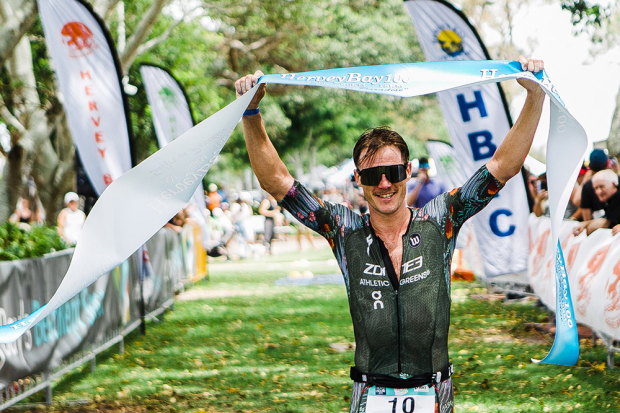
ST: What was your bike setup like for that race?
Josh: For Hervey Bay? So I raced the Specialized Shiv Disc with a SRAM eTap AXS 12 speed group set. My gear ratio was a 52t 1x with an 11-28 cassette. It was a flattish course with only shallow hills, so I didn’t need any room either side of my high and low gear ratios. The wheelset was Zipp Super9 paired with an 858 NSW, both tubeless on Schwalbe Pro One TT’s. Digging deeper, this was the first middle distance course I got to take my new Sync Ergonomics Evo Pro Ti cockpit too, and I was very happy with the comfort of the bars over the longer bike leg. The Evo Pro Ti a high resolution 3D printed titanium cockpit, and it’s a phenomenal piece of equipment that’s totally unique to my dimensions and needs in long distance triathlon.
ST: Do you have a closer look of said cockpit?
Josh: There’s a blog article behind the creation of the bars at this
source as well as a youtube video
on my channel with some details
The Evo Pro TI bars were horrifically expensive and time-consuming to design and produce, and while the product is available from Sync commercially if one wants to spend the money, the project was more about seeing what was possible when we pushed the limits of design and production. I’m very fortunate that I was one of a select few athletes able to benefit from this project.
ST: And what about your running shoes? Which one did you race?
Josh: I used the On Running Cloudboom Echo, On’s answer in the super shoe race. It’s a nice shoe with good road feel despite its size, and it’s purportedly getting some incredible updates this year which I’m looking forward to.
ST: More recently you also had a longer bike packing adventure. What inspired that?
Josh: Yeah mate! I trekked out on a loosely organized 4 day (or longer if you needed) event with a bunch of folks from the wider cycling community. It was called the Hunt 600, and we covered 640km including 12km of vertical gain over a very mixed bag of terrain. It was mostly gravel but with some long stretches of blacktop in between the fun bits. We camped out each night, rode 10-12 hours a day in a heatwave and saw some incredible country. It was a bit of a monster and it ended up far harder than I could have anticipated. But mate, it was a blast. I guess the inspiration was something like now or never. I’d spent the last two years of COVID19 stuck in Australia unable to travel and only competing in a small handful of events. Normally, I can’t do anything too adventurous or epic as I have a 10-month season of international racing to navigate, but two years had flown by and I hadn’t done anything out of the ordinary. So I saw this event come up and without much thought, I was in. I didn’t really even look at the route or the profile. However hard it was it didn’t bother me, I just wanted to do something different. After the first day I was buggered and the legs were totally blown, I honestly didn’t know how I was going to back up the fays. The first day was extreme; a heavily loaded gravel bike doing a half-Everest on MTB terrain under a baking sun, drinking water from creeks because it was that hot. I went to bed the first night trying to work out which way I would ride straight back home the next day, as I was honestly worried about how the brutal effort was going to ruin my season. But I stubbornly pressed on, quickly made peace with it all and in the end I kind of didn’t want to stop. I actually ended up with incredible fitness, and the slow and steady tempo of the riding meant that I recovered very quickly. All in all, it was an incredible experience, and I’m hooked.
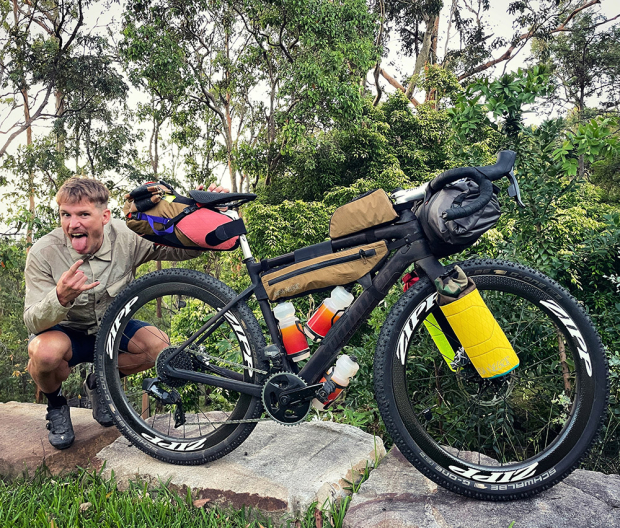
ST: Did you already have that gravel bike from Specialized or did you have to make an awkward call to them?
Josh: I’ve always loved riding in all its forms, and gravel riding has been part of my routine for many years now. Whether it’s for the physical or mental benefit, it’s important that I always have something that is capable. When negotiating a bike sponsorship, I’m always upfront about the bikes that I want. Triathletes are not quite known for great bike skills. I’ve heard of some sponsors in the past have apprehensions towards giving ‘fun’ bikes to their athletes. But I’m very fortunate with Specialized that they trust me enough, and also have something for every occasion. I’ve got my adventure bike sorted with the Diverge, and this year I hope to get my hands on the race-tuned Crux for the gravel assaults on Strava.
ST: How did you prep the bike and did you have help?
Josh: The Diverge comes in a package that’s ready for big adventure. There’s the 20mm dampener in the headtube and SWAT storage and all that, but mounts for bags and extra bottles are already there. An acquaintance (now friend) started an online store last year called The Bike Pack Shop, and he was also the one who put on the bike packing event. I aggrandized all my gear through him as well as plenty of advice and expertise, and we actually ended up riding every second of the trip next to each other as well. He’s only 19, but he’s hella keen on adventure and the outdoors, and I picked up a lot of knowledge from him about what to do, but also what not to do. He wanted to travel super light, so he had no tent and no change of clothes and limited food. He rode and slept in the same pair of bib shorts for 4 days straight, and also got hammered by mosquitoes every night once the sun went down. On the other hand, I was over prepared and had way too much gear, and paid the price each day pushing a bike twice as heavy as my partners. But you learn hard and fast, and we dealt with so much shit than I honestly feel like a bit of a veteran now [laughs].
ST: Other thoughts on that adventure.
Josh: What really amazed me about bike packing trip was the solitary nature of it, yet the support and comradery shared by all the riders. Some riders left earlier than we did to allow more time and did the whole thing by themselves. Other riders left later, rode 18 hours each day solo and finished it in 2-3 days. But at the end we all got together and had a chinwag, and whilst most of us were like ships in the night never seeing each other, you could feel that the bond was there. By chance, the day we left Max (The Bike Pack Shop) and I ran into two other riders doing the trip who planned to do it solo, but ended up more or less riding with us the whole way, either leapfrogging us or falling way behind, only to ride into the early hours of the morning to catch up in order to start the day together. These were ordinary riders performing incredible feats of endurance and willpower, and it really blew me away. I was at times in severe hardship and toiling with pulling out. But next to me was an ordinary bloke who’s an electrician by day, rides bikes a few hours a week for fun, but pushing through extreme conditions in the name of adventure. It’s not unlike an Ironman race day, but it was just different, I guess because race day for me is a selfish pursuit rather than something shared like this trip was. In the past, I’ve often grappled with a lack of motivation to ride my bike, but I’m hooked and stoked on riding again. I think the spirit and extreme physical nature of the event truly reinvigorated me.
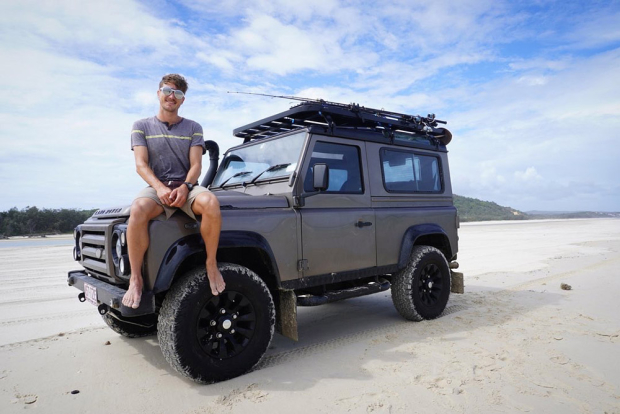
ST: And what is next?
Josh: Next up is the traditional Down Under season opener, IM 70.3 Geelong. I won it in 2020 but got my ass kicked in 2021. It’s an honest race, and I deserved what I got last year. It really awoke me as to how much I’d fallen behind after the first year of COVID19, and how hungry everyone else had gotten. I’ve since had my correction, and now I’m ready to go for a full year of big events.
ST: Talk about your 2022 race calendar and what you see as the highlights should the events actually happen as you would like.
Josh: After Geelong, I’ll head over to the inaugural Couple’s Championship with my fiancé Ashleigh. We’re really excited for this event as we’re being looked after very well to get to the race, and we’re being treated with a chance for a big 100k winner’s cheque. It’s a relay format event, with both of us doing 400/16/5km. We’re up against a Lagerstrom/Findlay, Luis/Spivey, Sharpe/Kasper, Murray/Klamer, Royle/Stanford et al roster, and it’s going to be super fun. The major event for the first half of the year will by the IM World Champs St George edition, and I’ll be doing 70.3 Oceanside for the first time as a lead in. I’ll leave the rest of the planning until after St George, as the result there might change my priorities leading into Kona later in the year. I’ll also have my eye on the new PTO series as that develops.
ST: How has COVID19 and its various variants affected you and the world around you?
Josh: I guess firstly I’d count myself lucky in saying that I haven’t lost any family or loved ones, but I also haven’t personally become sick or had my health compromised in any way. Apart from that, it’s obviously disrupted my profession as it has many others. I’m incredible fortunate in that I have a really good team of sponsors that have stuck by me and still paid wages despite an staggeringly low delivery of races on my end. That’s not to say it’s been easy and there hasn’t in some instances been reductions and difficult conversations, but for the larger part, I’m very fortunate to still have my head above water.
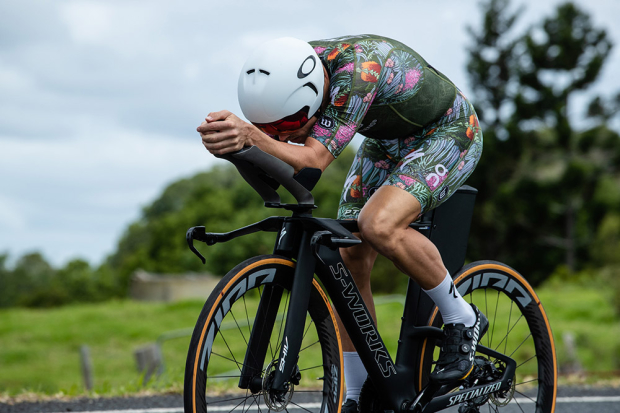
ST: Your swimming is still ace. Talk about how you often you swim these days and how much of it is in open water versus the pool, and maybe describe a hard pool workout.
Josh: My swimming day by day probably doesn’t look anywhere near as impressive as it does at times on race day, to be honest. I have some very dominant swims in the past, as evident by my first year at Kona where I was minutes ahead and alone, but I think in general I’ve lost my edge a little as I’ve gotten older. Everyone is a better swimmer these days, and the gaps are closing. I have a very natural ability and feel for the water, which helps me swim at a very high level when I need to, but generally there’s not no real advantage in men’s triathlon to be a stand out swimmer, so I don’t push it too much. On the whole, I was a way better swimmer 10 years ago than I am now, it’s definitely slid a bit as my needs for race day has changed. As for sets, 200’s and 400’s endurance work is still the money for me. I need to lay an endurance base before doing any other kind of work, and in the pool it’s all about repetition for me, and I don’t use too many tools. Just swimming short rest 2’s & 4’s, a little pull/paddles here and there and I actually enjoy doing some hypoxic work too. Open water training is a bit sporadic and definitely not a routine thing, but it’s still essential here and there.
ST: Is there a swimming only race you are eying?
Josh: When I said take on anyone, I meant in the sport of triathlon haha. A few years ago there was talk of something at the Kona Aquatic center between Andy Potts, Lucy Charles and I, but it never got off the ground. Lucy was keen of course but it was crickets from Andy. I’d never do a ‘swimming only ‘race with any sort of expectation, because it simply wouldn’t be fun or entertaining. Triathletes can’t compete with swimmers!
ST: This was not meant you entering a pure swimming race for glory, but for the unique location or challenge.
Josh: Nah, swimming events don’t interest me too much to be honest, and the Ho’ala swim before Kona each yeah is probably my limit. Hitting the pool for fast times would be something I’m more likely to do. I actually have a new swim sponsor to announce soon, which I’m quite excited about. So keep your eyes peeled for that.
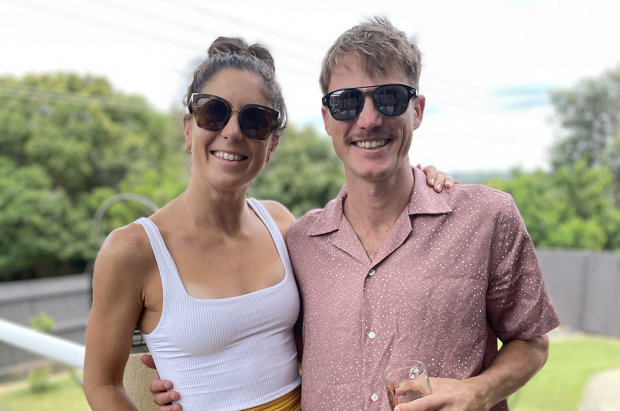
ST: Do you swim with a watch, or use one during a triathlon?
Josh: I would wear one in the run, but not for every race. It would depend on the competition and the distance. For IRONMAN a watch is the best tool for pacing. In a half IRONMAN, a watch is also good but you pay a penalty to get it on if the racing is tight. It is valuable time running out of T2, trying to get the right form but also fumbling getting a watch on. And I would never swim or ride with it, it would get in the way…
ST: Let us talk about cycling and running. How is it structured and how much of it is done indoors?
Josh: Over the last couple of years I’ve transitioned to doing a fair bit of my riding indoors. I loathed the concept from a young age but have warmed to it as I’ve seen the benefits. One of the reasons I always appreciated triathlon was the time spent outdoors, so I disregarded indoor training for many years. I also live in Australia and can train outdoors very comfortably all year round, so it was never a necessity anyway. But Zwift came in and set me up a couple of years ago and I’ve really warmed to it. Gimme that XP man! I love it. As far as training structure in general, it has actually been quite variable the last few years. I went from being self-coached in 2019, to a high intensity/low volume Philipp Seipp program in 2020, to now a more traditional style of hard work and no fluff with Cliff English. I’m responding really well so far being back with Cliff, and I’m really looking forward to seeing what level I can push my performance to this year.
ST: Anything else to know?
Josh: Here’s a rap about Bunya Nuts I wrote…
We got bunya nut stacks
There ain’t gunna be no more hunger flats
Genuine Aussie bush tucker
They come down hard like a mother trucker
A few scratches and some pains
But the natural protein bring them gains
Locate the tree, find them in the ditches
You’ll soon be basking in nature’s riches
Living for the forage
Eat ‘em everyday like they porridge
Soft starchy texture
There ain’t gunna be conjecture
That these nuts are the nectar
They gunna put you in another vector
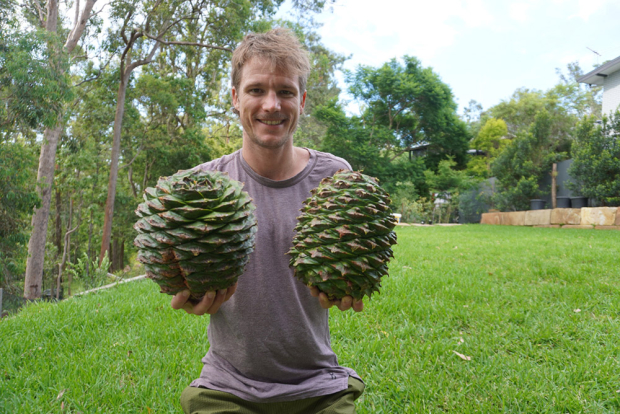
You can follow Josh Amberger on Instagram via @josh_amberger
Images 1, 3 and 5 @ Korupt Vision
Image 2 © Alex Polizzi
Images 4 and 7 courtesy of Josh Amberger


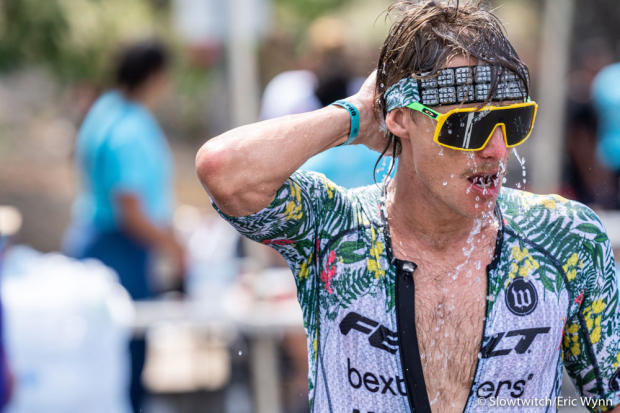
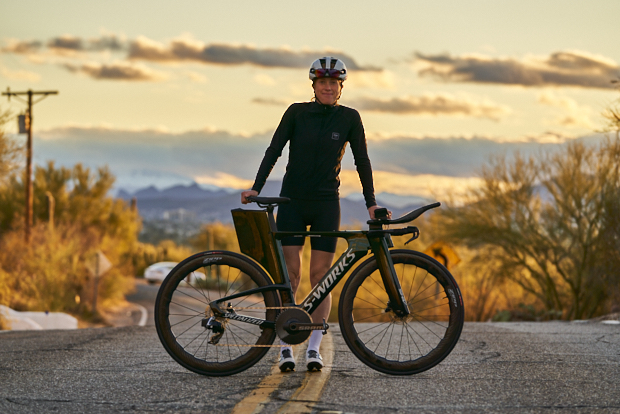
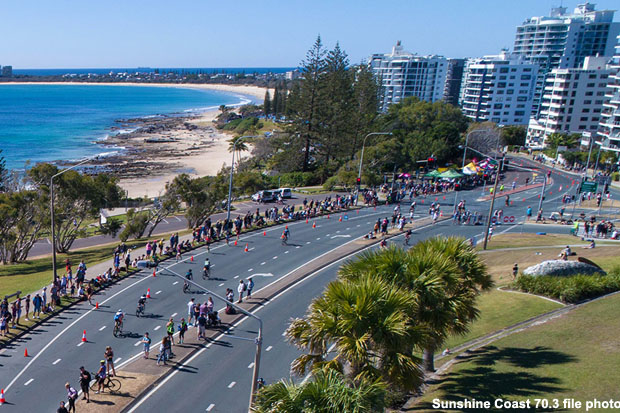
Start the discussion at slowtwitch.northend.network